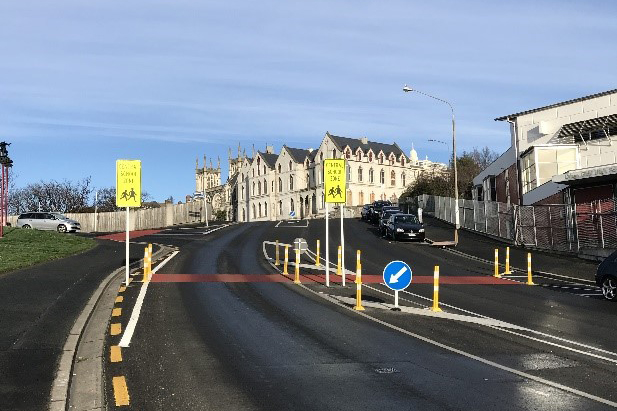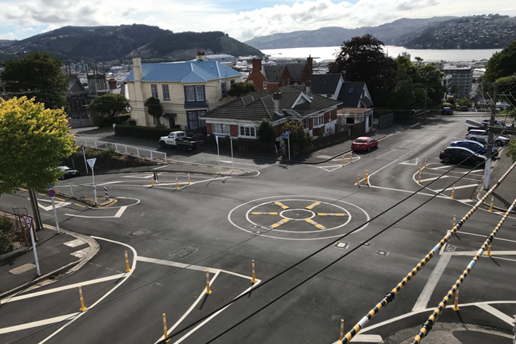Traffic safety was a major issue in the streets around several schools clustered together in Central Dunedin. The cluster comprises Otago Boys’ High School, Arthur Street School, Kavanagh College, Otago Girls’ High School and St Joseph’s Cathedral School, with a total of 3000 students across them. High vehicle speeds, poor parking behaviour, and limited sightlines contributed to an unsafe crossing environment and medium-high to high risk ratings on school roads. In addition, there was low parking availability for short-term visitors during the day. The schools wanted road safety improvements as soon as possible, and there was a drive from Dunedin City Council (DCC) to provide quick wins to prove to the schools and stakeholders how possible improvements could work. Permanent changes were estimated to cost $2 million and take eight months to be installed.
DCC surveyed key stakeholders to investigate the existing traffic safety problems and what would be needed to encourage more pupils to use other modes than cars. Several treatments were designed to concept stage and consulted on with key stakeholders and the general public, then trial versions installed over a one-month period at a cost of $50,000. The treatments included:
The trial nature of the treatments meant adjustments could be made based on monitoring and feedback. Adjustments made include moving two gateways slightly and planning additional intersection narrowing at one gateway.

Trial gateway treatments. Credit: Dunedin City Council.

Trial intersection improvements. Credit: Dunedin City Council.
Key findings of the trial were:
Several lessons were noted relating to the consultation format and nature of the changes:
Some of the changes trialled have already been made permanent, with funding available to complete the remainder by early 2020.